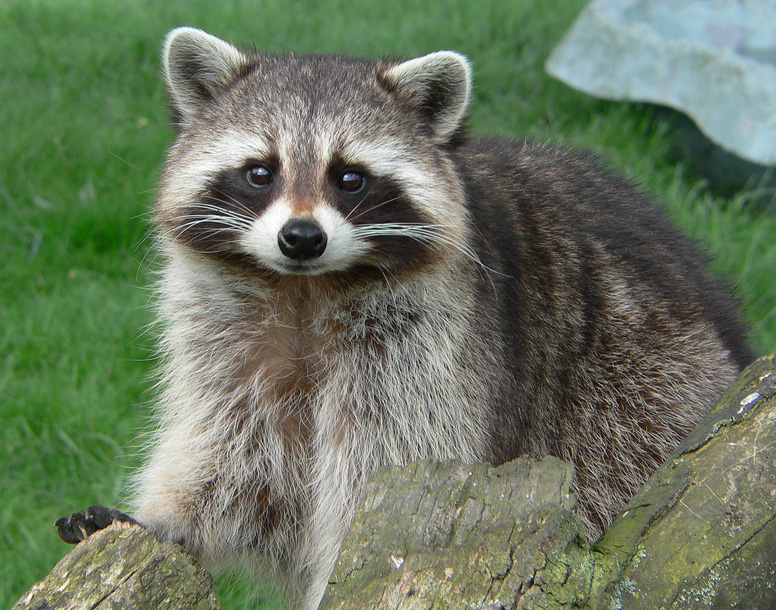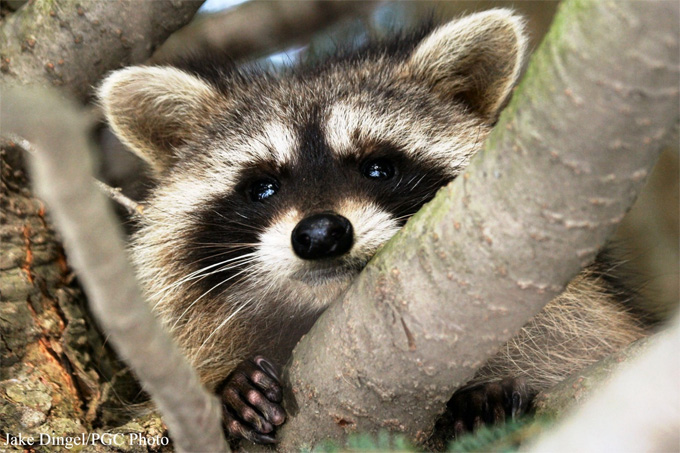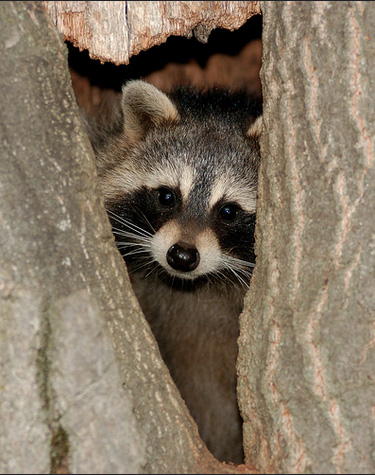Raccoon; photo by Neil McIntosh on Flickr (use permitted with attribution).
Official State Wild Animal of Tennessee
The raccoon was designated the official wild animal symbol of Tennessee in 1971 (Oklahoma also recognizes the raccoon as a state symbol). All State Mammals
The raccoon is also the focal point of Tennessee's official state painting: "Tennessee Treasures."
Raccoon Facts
The common raccoon (Procyon lotor) is a mammal native to the Americas. Raccoons living in Tennessee measure 30-38 inches long (including their tails) and weigh 12-25 pounds.
The name "raccoon" is derived from the Native American word "aroughcoune" (Algonquian language), which means "he who scratches with his hands." Raccoons range over the entire USA except for the Rockies and desert southwest. Nocturnal and generally solitary, raccoons walk like bears and are good swimmers. Males are generally larger than females.
Distinctive in appearance with their masks and striped tail, the raccoon is as comfortable in urban areas as in the deep woods. In the wild raccoons live in caves, tree hollows and ground burrows. In urban areas they are found in attics, chimney flues, culverts under roadways, or wherever they can find a safe, dry and reasonably comfortable niche.
The raccoon is omnivorous and will eat just about anything including insects, frogs, fish, birds, small mammals and the leftovers discarded in your trash can (which they can be exceedingly clever extracting). They have the reputation of "washing" their food, though it's not certain that this act is meant to clean the food as they have been observed performing these washing motions even when water is not available.
Mating occurs in late winter. A litter of 4-5 kits are born in April or May. The male raccoon takes no part in raising the young and the female will chase him from the den area if need be. The kits remain with the mother until the next summer. In severe winter climates, the raccoon will become dormant, but they do not hibernate.
Raccoons were hunted aggressively in earlier times, mostly for their water repellent fur. In the days of Davy Crockett & Daniel Boon, the coonskin cap was a common clothing item. It was estimated that more than a million raccoons were killed each year for their fur. So many raccoons were killed that a tax was imposed to prevent their extinction in the 1800's. The raccoon population suffered greatly at the hands of man, but this iconic "masked bandit" made a remarkable comeback.
CONTRIBUTORS: content for this article was submitted by June R. McKenzie.


